Showing Spotlights 1409 - 1416 of 2851 in category All (newest first):
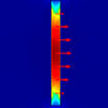 Nanoplasmonics and nanomechanics have been considered as two disparate fields. However, they both deal with waves of different nature. Nanoplasmonic antennas, or simply nanoantennas, are tiny optical analogs of radio-frequency antennas are resonators for light waves. On the other hand nanomechanical oscillators behave as resonators for acoustic waves. By integrating optical nanoantennas directly on a nanomechanical resonators, researchers have now shown that it is possible to achieve very efficient interactions between light and nanomechanical resonators. This hybrid approach enables novel functionalities in various applications.
Nanoplasmonics and nanomechanics have been considered as two disparate fields. However, they both deal with waves of different nature. Nanoplasmonic antennas, or simply nanoantennas, are tiny optical analogs of radio-frequency antennas are resonators for light waves. On the other hand nanomechanical oscillators behave as resonators for acoustic waves. By integrating optical nanoantennas directly on a nanomechanical resonators, researchers have now shown that it is possible to achieve very efficient interactions between light and nanomechanical resonators. This hybrid approach enables novel functionalities in various applications.
Apr 17th, 2013
 The fascination with two-dimensional (2D) materials that has started with graphene has spurred researchers to look for other 2D structures like for instance metal carbides and nitrides. A new, very comprehensive review article takes a look at our current knowledge of 2D materials beyond graphene. The paper outlines the different chemical classes of 2D materials and discuss the various strategies to prepare single-layer, few-layer, and multilayer assembly materials in solution, on substrates, and on the wafer scale.
The fascination with two-dimensional (2D) materials that has started with graphene has spurred researchers to look for other 2D structures like for instance metal carbides and nitrides. A new, very comprehensive review article takes a look at our current knowledge of 2D materials beyond graphene. The paper outlines the different chemical classes of 2D materials and discuss the various strategies to prepare single-layer, few-layer, and multilayer assembly materials in solution, on substrates, and on the wafer scale.
Apr 15th, 2013
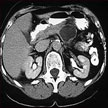 Computed tomography (CT) scans are an imaging method that use x-rays to create pictures of cross-sections of the body. Many CT scans involve intravenously injected iodinated contrast agents - but they have drawbacks such as fast clearance and side effects. Due to these limitations, nano-sized iodinated CT contrast agents have been developed that can increase the circulation time and decrease the adverse effects. In addition to iodine, nanoparticles based on heavy atoms such as gold, lanthanides, and tantalum are used as more efficient CT contrast agents.
Computed tomography (CT) scans are an imaging method that use x-rays to create pictures of cross-sections of the body. Many CT scans involve intravenously injected iodinated contrast agents - but they have drawbacks such as fast clearance and side effects. Due to these limitations, nano-sized iodinated CT contrast agents have been developed that can increase the circulation time and decrease the adverse effects. In addition to iodine, nanoparticles based on heavy atoms such as gold, lanthanides, and tantalum are used as more efficient CT contrast agents.
Apr 10th, 2013
 The first part of this survey, which we posted yesterday in our Nanowerk Spotlight, introduces nanotechnology policy making and the reasons for its complexity, and offers a panorama of the set of mandatory tools that are currently available to regulate nanotechnologies. The second part, today, provides an outlook of the set of voluntary tools that coexist with the mandatory ones. For the voluntary environmental programs that are in place for nanomaterials, governments are urging companies to submit health and safety information on the nanomaterials they produce or commercialize.
The first part of this survey, which we posted yesterday in our Nanowerk Spotlight, introduces nanotechnology policy making and the reasons for its complexity, and offers a panorama of the set of mandatory tools that are currently available to regulate nanotechnologies. The second part, today, provides an outlook of the set of voluntary tools that coexist with the mandatory ones. For the voluntary environmental programs that are in place for nanomaterials, governments are urging companies to submit health and safety information on the nanomaterials they produce or commercialize.
Apr 4th, 2013
 Complicating things, science is quite divided on how to assess nanotechnology materials and applications. Consequently, as the public discussion about the regulation of nanotechnology in general, and nanomaterials in particular, heats up, emerging opinions on the applicability of existing regulation differ substantially and so do views on which regulatory options best address the current lack of information about environment, health and safety risks of nanomaterials, as well as the regulatory uncertainty and concerns expressed by the politicians, members of the public and industry, and investors. A new, two-part survey outlines the different frameworks policy makers have developed.
Complicating things, science is quite divided on how to assess nanotechnology materials and applications. Consequently, as the public discussion about the regulation of nanotechnology in general, and nanomaterials in particular, heats up, emerging opinions on the applicability of existing regulation differ substantially and so do views on which regulatory options best address the current lack of information about environment, health and safety risks of nanomaterials, as well as the regulatory uncertainty and concerns expressed by the politicians, members of the public and industry, and investors. A new, two-part survey outlines the different frameworks policy makers have developed.
Apr 3rd, 2013
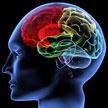 A comprehensive understanding of the brain remains an elusive, distant frontier. To arrive at a general theory of brain function would be an historic event, comparable to inferring quantum theory from huge sets of complex spectra and inferring evolutionary theory from vast biological field work. The proposed Brain Activity Map is a project that will tap the hive mind of experts to make headway in the understanding of the field. Engineers and nanotechnologists will be needed to help build ever smaller devices for measuring the activity of individual neurons and, later, to control how those neurons function. Recent developments in nanoscale analysis tools and in the design and synthesis of nanomaterials have generated optical, electrical, and chemical methods that can readily be adapted for use in neuroscience.
A comprehensive understanding of the brain remains an elusive, distant frontier. To arrive at a general theory of brain function would be an historic event, comparable to inferring quantum theory from huge sets of complex spectra and inferring evolutionary theory from vast biological field work. The proposed Brain Activity Map is a project that will tap the hive mind of experts to make headway in the understanding of the field. Engineers and nanotechnologists will be needed to help build ever smaller devices for measuring the activity of individual neurons and, later, to control how those neurons function. Recent developments in nanoscale analysis tools and in the design and synthesis of nanomaterials have generated optical, electrical, and chemical methods that can readily be adapted for use in neuroscience.
Mar 27th, 2013
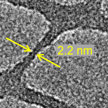 The boundaries of electron beam lithography (EBL), the workhorse of current nanofabrication processes, is constantly being pushed further down into the single nanometer range by researchers' efforts to overcome the various limitations of EBL resolution - spot size, electron scattering, secondary-electron range, resist development, and mechanical stability of the resist. A team of scientists has now achieved the EBL fabrication of 2 nm feature size and 10 nm periodic dense structures, which are the highest resolution patterns ever achieved with common resists. The minimum feature size, 2 nm, is composed of roughly 10 atoms wide, and with just a few atoms of standard deviation.
The boundaries of electron beam lithography (EBL), the workhorse of current nanofabrication processes, is constantly being pushed further down into the single nanometer range by researchers' efforts to overcome the various limitations of EBL resolution - spot size, electron scattering, secondary-electron range, resist development, and mechanical stability of the resist. A team of scientists has now achieved the EBL fabrication of 2 nm feature size and 10 nm periodic dense structures, which are the highest resolution patterns ever achieved with common resists. The minimum feature size, 2 nm, is composed of roughly 10 atoms wide, and with just a few atoms of standard deviation.
Mar 26th, 2013
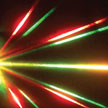 Applications and studies in DNA-based biophysics, biochemistry and biotechnology rely on accurate imaging with high temporal and spatial resolution towards the mesoscopic and single-molecule levels. This, in turn, relies on the ability to immobilize and stretch portions of DNA on a substrate without damaging it. Researchers in Italy have now reported a noninvasive, all-optical, holographic technique for permanently aligning liquid crystalline DNA filaments in a microperiodic template realized in soft-composite materials.
Applications and studies in DNA-based biophysics, biochemistry and biotechnology rely on accurate imaging with high temporal and spatial resolution towards the mesoscopic and single-molecule levels. This, in turn, relies on the ability to immobilize and stretch portions of DNA on a substrate without damaging it. Researchers in Italy have now reported a noninvasive, all-optical, holographic technique for permanently aligning liquid crystalline DNA filaments in a microperiodic template realized in soft-composite materials.
Mar 25th, 2013
 Nanoplasmonics and nanomechanics have been considered as two disparate fields. However, they both deal with waves of different nature. Nanoplasmonic antennas, or simply nanoantennas, are tiny optical analogs of radio-frequency antennas are resonators for light waves. On the other hand nanomechanical oscillators behave as resonators for acoustic waves. By integrating optical nanoantennas directly on a nanomechanical resonators, researchers have now shown that it is possible to achieve very efficient interactions between light and nanomechanical resonators. This hybrid approach enables novel functionalities in various applications.
Nanoplasmonics and nanomechanics have been considered as two disparate fields. However, they both deal with waves of different nature. Nanoplasmonic antennas, or simply nanoantennas, are tiny optical analogs of radio-frequency antennas are resonators for light waves. On the other hand nanomechanical oscillators behave as resonators for acoustic waves. By integrating optical nanoantennas directly on a nanomechanical resonators, researchers have now shown that it is possible to achieve very efficient interactions between light and nanomechanical resonators. This hybrid approach enables novel functionalities in various applications.
 Subscribe to our Nanotechnology Spotlight feed
Subscribe to our Nanotechnology Spotlight feed





